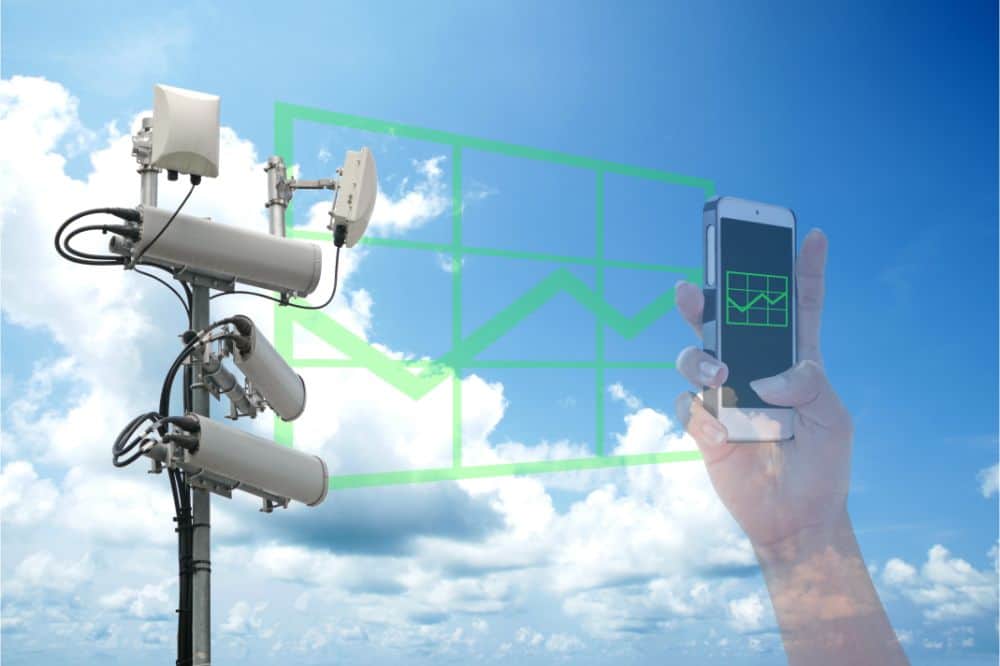It is nearly impossible to imagine a life in the absence of mobile devices. For staying in touch with our near & dear ones, conducting business deals or simply accessing vital information our dependency is maximum on mobile communication. Yet there are moments when our devices struggle to maintain a strong signal. This is where mobile signal boosters come into the picture.
This informational blog will explore the external and internal factors that directly influence the performance of mobile signal boosters. This will offer insights that will empower you to enhance your mobile connectivity. Come along as we commence on a journey to unlock the secrets of boosting your mobile signal.
Ensure that you never miss a moment in our increasingly connected world with the help of this blog post. Stay tuned!!
External Factors Impacting Mobile Signal Boosters
The following part of the blog post will shed some light on the external factors that impact mobile signal boosters. Let us have a look at them below one by one.
Signal Strength and Quality
This factor measures the power and clarity of the signal received from your mobile carrier. A signal booster becomes essential to ensure uninterrupted communication specifically in areas with weak or fluctuating signal strength.
However, signal strength is really important as even a strong signal may suffer from distortions or noise. This can significantly affect call quality and data speeds. A high-quality signal booster enhances signal strength apart from filtering out noises. Hence, these ensure crystal-clear calls and fast data connections.
Tower Proximity
It is a fact that the more closer you are to a cell tower the stronger your incoming signal will be. Signal boosters become a need for those residing in remote or rural areas where cell towers are often more distant. These devices work extensively by capturing the available signal and amplifying it. This effectively extends the reach of the cell tower.
Weather Conditions
Weather conditions like rain, snow and other forms of precipitation attenuate radio signals as they pass through the atmosphere. This ultimately leads to weaker signal strength.
Furthermore, high winds and storms can cause physical damage to the components of external antennas reducing their efficiency. Also, fluctuations in temperature may significantly affect the durability and functionality of signal boosters.
Geographic Terrain
Signal inconsistencies can develop due to obstruction by natural features like hills and valleys especially in areas with rugged or mountainous terrain. On the other hand, open and flat terrains often allow for better signal propagation.
Consequently, the type of terrain also affects the optimal placement of antennas which makes it essential to consider the geographical features when installing signal boosters.
Internal Factors Affecting Mobile Signal Boosters
The succeeding section of the informational blog will make readers familiar with the internal factors that affect mobile signal boosters directly. Let us commence this journey together to learn more about signal boosters below.
Booster Placement
Proper placement and positioning of the booster’s indoor and outdoor antennas is a critical factor for effective signal amplification. The outdoor antenna must be installed where it can capture the strongest available signal from the nearby cell tower.
On the other hand, the indoor antenna must be strategically placed to distribute the boosted signal evenly throughout the desired coverage area. Therefore, thoughtful placement minimizes signal interference, oscillation and signal loss. Thus, it allows the booster to efficiently enhance mobile connectivity within the space.
Antenna Type and Placement
The choice of antennas such as omnidirectional or directional must directly align with specific signal enhancement requirements. Omnidirectional antennas transmit and receive signals in all directions which makes them suitable for broader coverage areas.
In contrast to them, directional antennas focus on a more specific direction that is ideal for targeting a weak signal source. Furthermore, careful placement of both antennas is vital to maximise signal reception and distribution that ensures optimal performance and eliminates interference for a more robust mobile signal.
Cable Quality
The cables that are used to connect the booster’s components such as outdoor and indoor antenna, the amplifier unit must be of superior quality. Signal loss and reduced booster performance can result from the use of low-quality or inadequately shielded cables.
High-quality cables with proper insulation and shielding subsequently maintain signal integrity; this enables the booster to amplify and distribute the mobile signal efficiently–ultimately ensuring a more reliable, consistent connectivity.
Signal Interference
Electronic devices, Wi-Fi networks, or even the booster’s components can disrupt the amplified signal with impactful interference. This disruption may result in dropped calls or sluggish data speeds. To preserve a clear and robust mobile signal, it is crucial to install properly and troubleshoot potential sources of interference.
Furthermore, selecting a booster model equipped with features to reduce interference. This strategic action can effectively mitigate the internal factor mentioned potentially ensuring enhanced connectivity.
Tips for Maximizing Mobile Signal Booster Effectiveness
The following section discusses various tips for maximising Mobile signal Booster effectiveness. So, stay tuned and read till the very end.
Optimal Antenna placement: Ensuring that the outdoor antenna captures the strongest available signal and the indoor antenna is strategically positioned to distribute the boosted signal throughout your space.
Choosing the Right Antenna Type: Your specific coverage requirements significantly benefit from selecting an antenna type that suits them.
Investing in quality cables yields significant benefits: High-quality, appropriately shielded cables lessen a considerable amount of signal loss and interference.
Regular Maintenance: Periodically inspecting and maintaining your booster aids in preserving its top working condition; thus, proving to be advantageous.
Eliminate Interference: It is recommended to identify and eliminate potential sources of signal interference within your environment for a clearer, more robust mobile signal.
Conclusion
In essence, a range of factors–external and internal alike–dictate the effectiveness of mobile signal boosters. Weather conditions and geographical terrain, among various external elements, pose consistent signal enhancement challenges. Conversely, determining the performance of a mobile booster hinges significantly on internal factors such as antenna type and placement, cable quality, and signal interference.
Thus, meticulous consideration and address of these factors during signal booster installation and maintenance are imperative for attaining optimal results. Enhanced mobile connectivity facilitating accelerated data speeds, minimized dropped calls, & ensured an impeccably seamless communication experience across various locations in the potential outcome you stand to gain.




